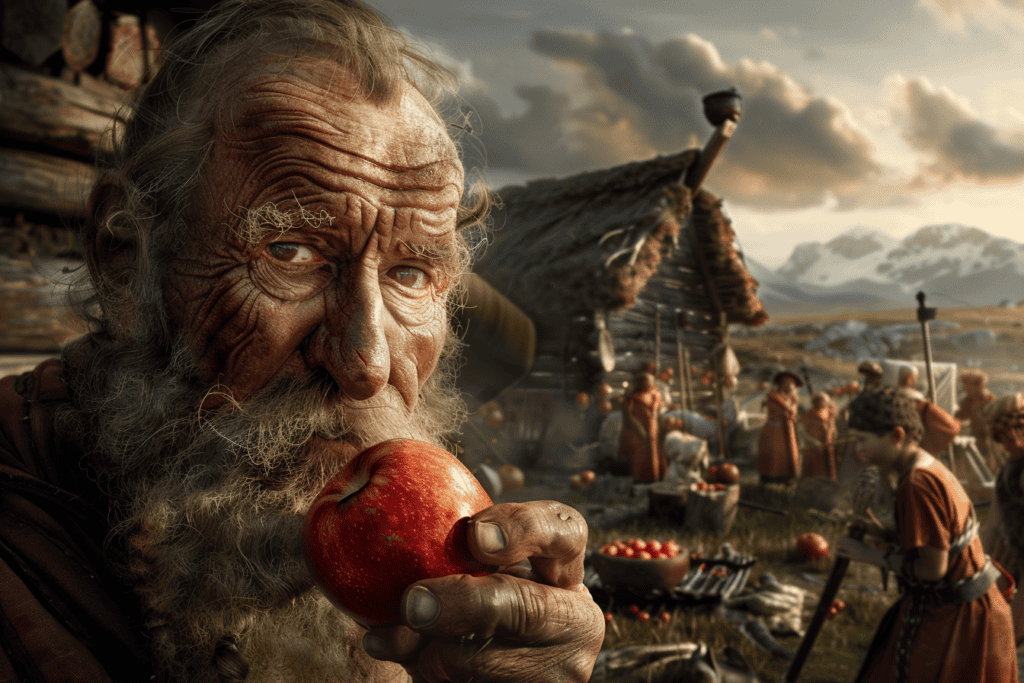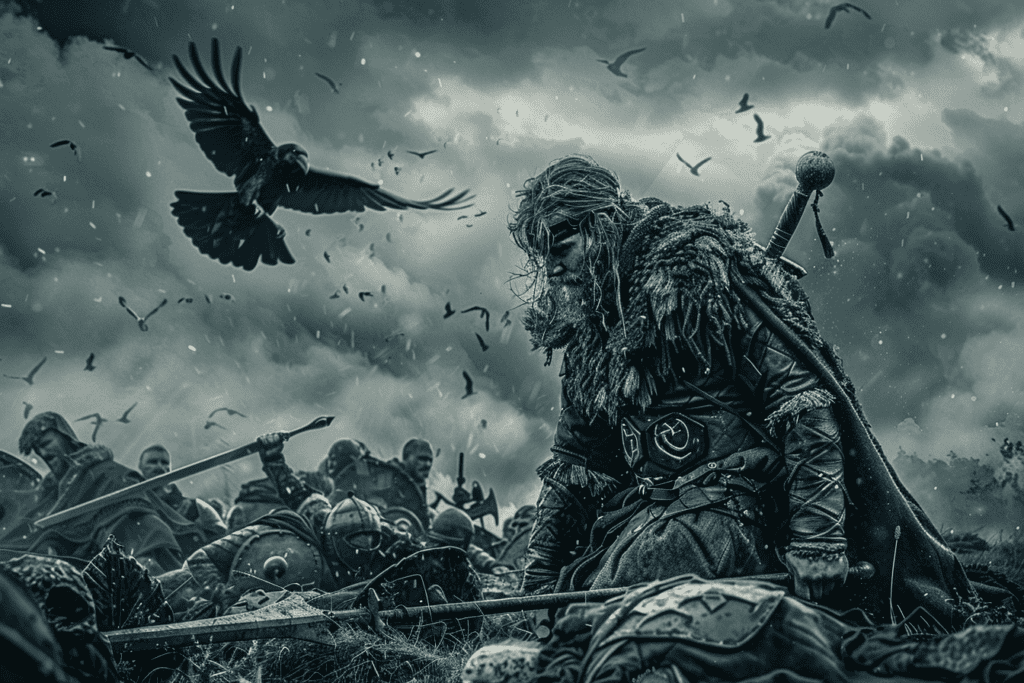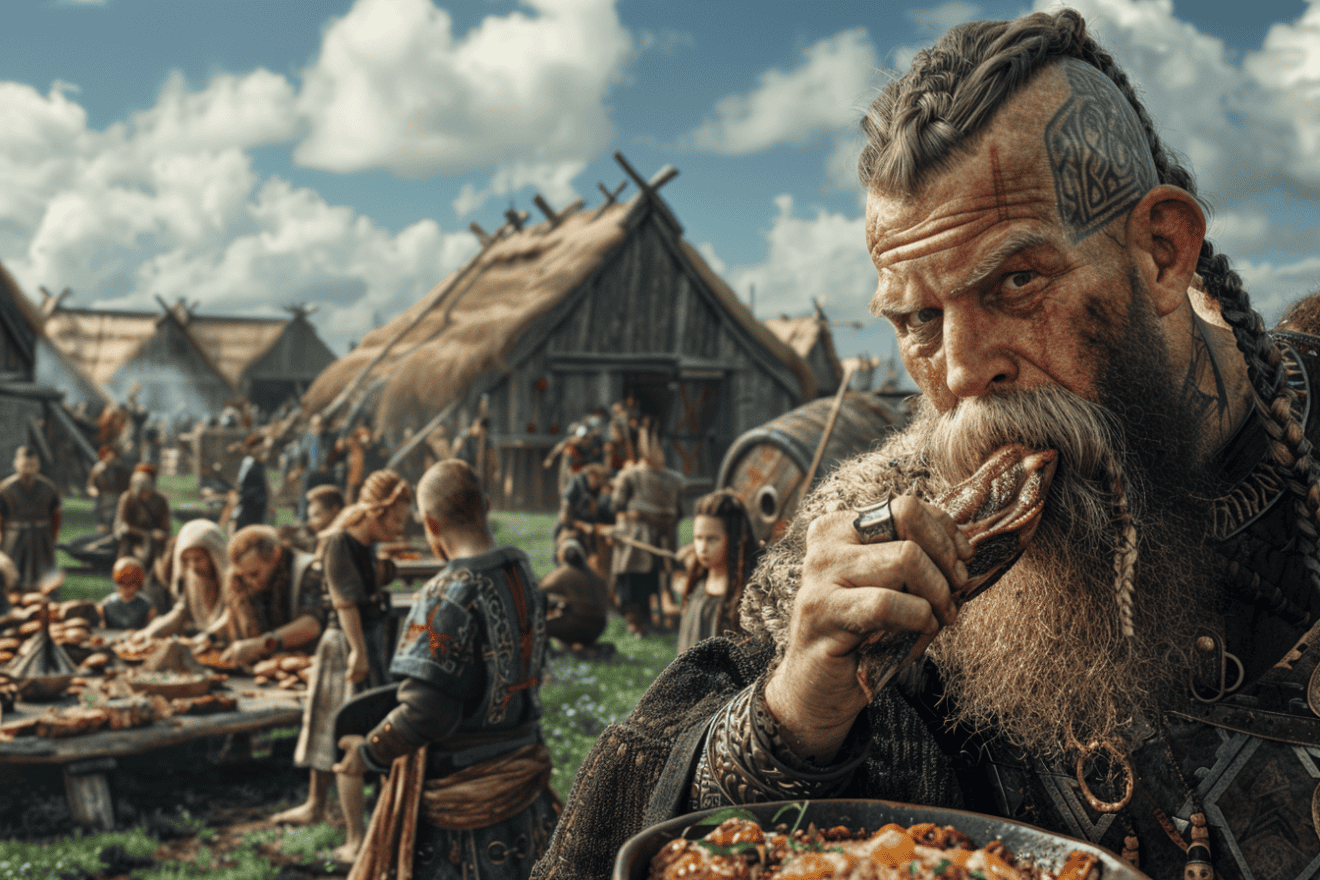The Vikings were a seafaring people who lived in Scandinavia during the Viking Age, which lasted from the late eighth century to the mid-eleventh century.
They were known for their raids on other countries, their advanced shipbuilding skills, and their unique culture. But how long did Vikings live for, and what did they die from?

While there is no definitive answer to this question, most Vikings lived to be between 35 and 50 years old.
This is similar to the life expectancy of other people in the Middle Ages, which typically ranged between 33 and 55 years of age. However, the average lifespan of a Viking at birth was much lower, due to high rates of infant mortality and childhood diseases.
As for what Vikings died from, there is evidence to suggest that they suffered from a range of health problems, including tooth decay, arthritis, and infections. They also faced the risk of death from battles, accidents, and exposure to harsh weather conditions.
Viking Lifespan and Health

The Vikings were known for their hearty and varied diet, which included a mix of meat, fish, vegetables, fruits, grains, nuts, dairy products, and honey. They were skilled hunters and fishermen, and relied heavily on these sources of protein to sustain themselves.
They also grew crops such as barley, oats, and wheat, which they used to make bread and other baked goods.
Despite their varied diet, the Vikings did not have access to modern nutritional knowledge and often suffered from deficiencies in certain vitamins and minerals. For example, it is believed that they may have been deficient in vitamin C, which can lead to scurvy. To combat this, they would often consume foods high in vitamin C, such as berries and other fruits.
Common Diseases and Medical Practices
The Vikings lived in a time when medical knowledge was limited, and as a result, they were susceptible to a number of common diseases. These included infections, respiratory illnesses, and gastrointestinal disorders, which could be caused by poor sanitation and hygiene practices.
To treat these illnesses, the Vikings relied on a mix of medicinal herbs and plants, as well as bloodletting and other primitive medical practices. They also believed in the power of magic and superstition, and would often turn to shamans and other spiritual leaders for guidance and healing.
Impact of Warfare on Lifespan
The Vikings were a warrior culture, and as such, they were constantly engaged in battles and conflicts. This had a significant impact on their lifespan, as many warriors would die in battle or suffer from injuries that could lead to early death.
In addition to physical injuries, the stress and trauma of warfare could also have long-term effects on the health of Viking warriors. Many would suffer from post-traumatic stress disorder (PTSD), which could lead to a range of physical and mental health problems later in life.
Causes of Death Among the Vikings

The Viking Age was characterized by a high degree of violence, and many Vikings met their end on the battlefield. The Vikings were known for their raiding and pillaging, which often led to battles with other groups.
These battles were often fierce and bloody, and many Vikings died as a result of their wounds. The Vikings were also known for their prowess in battle, and many of them died fighting for their cause.
Lifestyle and Environmental Factors
The Vikings lived in a harsh environment, and their lifestyle was not always conducive to good health. The Vikings were known for their heavy drinking and smoking, which could lead to a variety of health problems.
In addition, the Vikings often lived in close quarters with animals, which could lead to the spread of disease.
The harsh environment in which they lived also meant that the Vikings were often exposed to the elements, which could lead to hypothermia, frostbite, and other health problems.
Influence of Pagan Beliefs on Mortality
The Vikings were a pagan people, and their beliefs had a significant impact on their mortality rates. The Vikings believed in fate and destiny, and they often saw death as a natural part of life.
This meant that they were often willing to take risks that other people might not have taken, which could lead to an increased risk of death. The Vikings also believed in the afterlife, and they often saw death as a way to enter into the halls of the gods.
Cultural and Social Influences on Longevity

Role of Viking Women in Society
In Viking culture, women played an important role in society. They were responsible for managing the household and raising children. Women were also involved in trading and could inherit property.
This allowed them to have a certain degree of economic independence. Women were also known to have participated in battles, although this was rare.
The importance of women in Viking society may have contributed to their longevity. Women who were able to manage their households and families effectively may have been less stressed and had better mental health.
The Significance of Settlements and Trade
Settlements and trade were important aspects of Viking culture. The Vikings were known for their seafaring skills and traded extensively with other cultures. Settlements were established in areas such as Iceland, Greenland, and the British Isles.
Settlements and trade may have contributed to the longevity of the Vikings. Settlements provided access to resources such as food, shelter, and healthcare. Trade allowed the Vikings to acquire goods and knowledge from other cultures, which could have had a positive impact on their health and wellbeing.
Religious Conversion and Its Effects
The Vikings were initially pagan, but many converted to Christianity during the Viking Age. The conversion to Christianity had a significant impact on Viking culture and society.
The conversion to Christianity may have had both positive and negative effects on the longevity of the Vikings.
On one hand, Christianity promoted values such as compassion and care for the sick, which could have led to better healthcare and improved overall health.
On the other hand, the conversion also led to the destruction of many pagan artifacts, including written works such as the Icelandic sagas.
These works contained valuable information about Viking culture and society, and their destruction may have had a negative impact on the preservation of knowledge related to longevity practices.
The cultural and social influences on longevity in Viking society were complex and multifaceted. Factors such as the role of women in society, settlements and trade, and religious conversion all played a role in the longevity of the Vikings. Understanding these factors can provide insight into the practices and beliefs that contributed to the longevity of this fascinating culture.










Add Comment